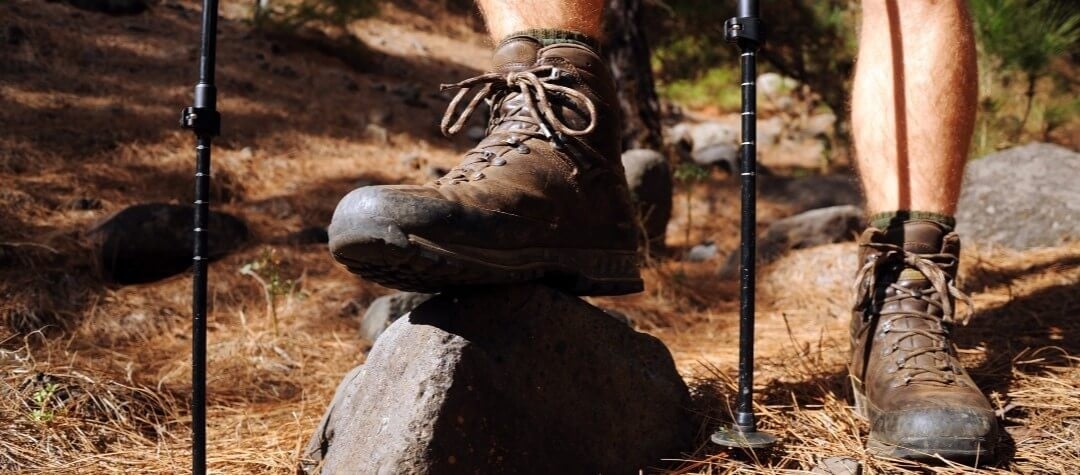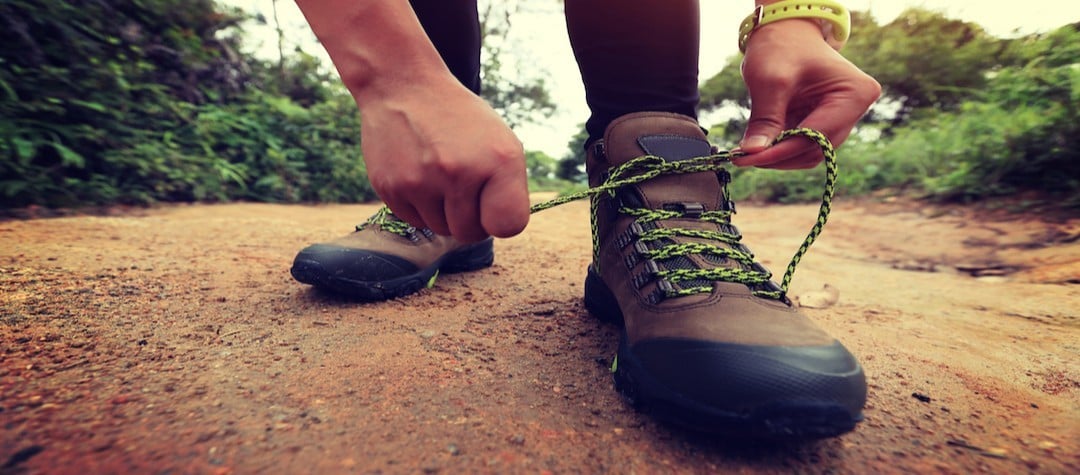Walking can be a great way to boost your health and increase your fitness – use one of our 3 easy walking workouts to help get you started.
Rome wasn’t built in a day, and in the same way a novice wouldn’t register for a marathon happening just a few weeks ahead, you need to pace your training for fitness walking too. Depending on your level of fitness, chose one of our workouts to turn a quick stroll for a few minutes each day into something that steadily increases your speed or burns off those calories.
1. Burn off calories
Add a little terrain to your workout and you’ll reap some healthy benefits. Take the following example and you should see 300 calories (approx. 1250 kilojoules) burned off. Start with around a minute of knee lifts, engaging those abdominal muscles, before a steady walk on flat ground, heading towards a hill climb, carefully increasing your speed steep as you climb for a couple of minutes. Give yourself a breather then head straight down the hill again over the same period of time, before returning to the summit through a series of walking lunges this time, pushing strongly off.
On returning to the foot of the hill, work on a series of squats in a sumo style as you ascend the hill again, sideways on, lifting your arms to shoulder height, switching sides halfway up.
Take another breather and then head down the hill again, and then head up again, this time making the trip up using hill bounds, alternating your feet as wide as possible as you climb, as if in a V-pattern, leaping each step. Give yourself further recovery time then return to the bottom of the hill before carrying on for another two minutes until you’re back to your starting point, just under half an hour later.
2. Add speed to your workout
To add speed to your walking a more brisk routine will help you, perhaps using this workout as an example.
First off, ensure you begin each workout with a 10 to 15-minute warm-up - this should involve walking at a comfortable pace, ideally on flat ground. Keep a steady rhythm as you walk, perhaps matching your stride to suggested step counts available on a walking app.
Once you’ve warmed up you can move on to the main workout. Fill your lungs first, inhaling as deeply as possible to ensure you get lots of oxygen. This will help burn off fat efficiently, while also bolstering endurance levels. Then use your abdominal muscles to propel yourself forwards, hinging slightly forward from your hips rather than your waist – which helps prevent back and hip problems. Through bending your elbows, you can swing your arms faster, and your legs will naturally accelerate to keep up. Continue this brisk pace for around 20 minutes.
For extra speed, swing your arms right back until your hands are next to your ribs. Taking shorter steps will also help speed things up and eat up more calories. If you can fight off the urge to take longer strides, you won’t be taxing your joints.
Once you’re comfortable walking briskly for 20 minutes you can add in hill climbs or lengthen your walk.
Remember to always end with a five to 10-minute cool down.
3. Add distance to your workout
Studies suggest a workout that lasts an hour or more can see you increase post-exercise calorie burns nearly fivefold compared with a 30-minute walk - losing 350 calories (approx. 1460 kilojoules) through the process. A longer workout can also get you in shape for bigger goals such as a half-marathon, and your physical strength will slowly improve as you build up good walking habits.
To increase your distance you can try this six-day workout over 12 weeks. In this example perhaps have Monday as your rest day:
Day 1
Try a 4 mile (approx. 6.5k) ‘interval’ walk – involving short spells of fast-pace walking followed by normal-pace strolls.
Day 2
Complete a comfortable walk of three miles for better technique.
Day 3
Try a power walking routine – really pushing yourself - for 4-5 miles (6.5-8k).
Day 4
Aim for two hours of cross-training, in other words other exercises such as cycling or swimming, which are vital components in helping you adapt to long distance walking.
Day 5
Try a steady-pace – that’s slightly faster than your normal pace - long distance walk, slowly building up each week to 80% of your goal distance, before hitting your goal distance in the final two weeks.
Day 6
This day can also be used for recovery, but with at least 45 minutes of cross-training or comfortable walking.
Then you’re back to your rest-day before starting all over again.















